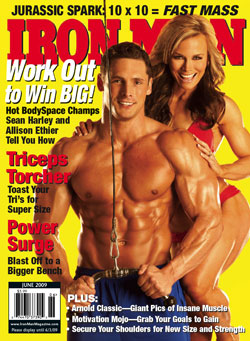
Sean Harley and Alison Ethier, Winners of the 2009 IRON MAN & Bodybuilding.com BodySpace Model Search
For more info on this year’s cover model contest, visit the BODYBUILDING.COM and The LA FIT EXPO Websites
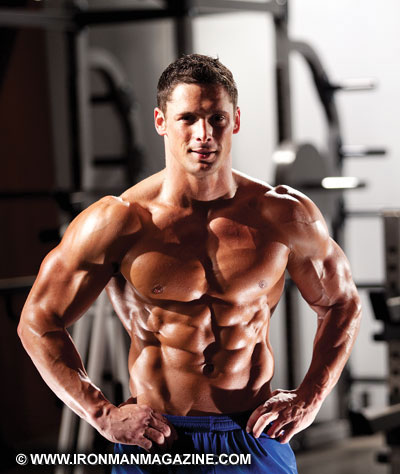
Former college athlete Sean Harley knows how to take on challenges. As a fitness model, Sean has been featured in many workout magazines and has graced the covers of international publications. He’s also counseled many people on supplementation and nutrition for weight loss and muscle growth, as well as overall health.
Now Sean is here to share all of his insights, advice and secrets with you!
DY: First of all, congratulations on winning the IRON MAN/Bodybuilding.com Bodyspace Model Search. How do you feel?
SH: The entire weekend competition was a thrill, and when I heard my name called for the trophy, I was on top of the world! All my hard work has really paid off, and I’m excited to work with Bodybuilding.com and represent the ever-growing population on Bodyspace.
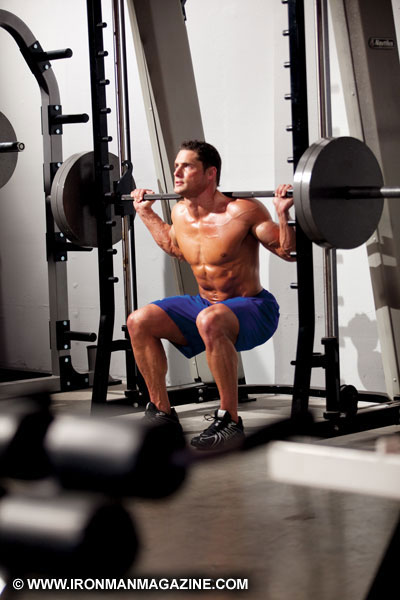
DY: I know it took a lot of discipline and hard work to accomplish that goal. Is this the best condition you’ve achieved to date?
SH: It’s probably the most muscle mass that I’ve displayed publicly as a fitness model, but I was far from my leanest. The contest was in January, which for me was in the middle of my winter mass-building stage. That means allowing a little extra junk in the trunk caused by a calorie excess (or you could say holiday eating) that lets me put on some new muscle. When I found out that I was in the top five, I had eight days to cut up and be onstage! I managed to drop about nine pounds, probably sacrificing a little muscle, but I came in with decent cuts. Another week or two of prep and I could have been a lot leaner.
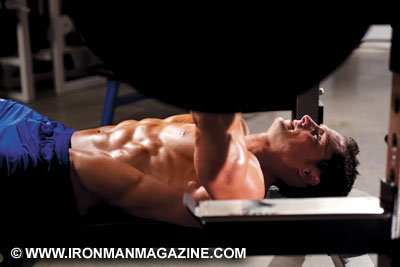
DY: So you might say that the real competition was with yourself more than onstage with the other competitors.
SH: My main competition was with myself to see how lean I could get in that short amount of time without sacrificing too much hard-earned muscle. I knew that the other competitors were in the same boat and would be handling their business and that I had no control over that. What I could control was my own effort and discipline in getting my body ready for a show.
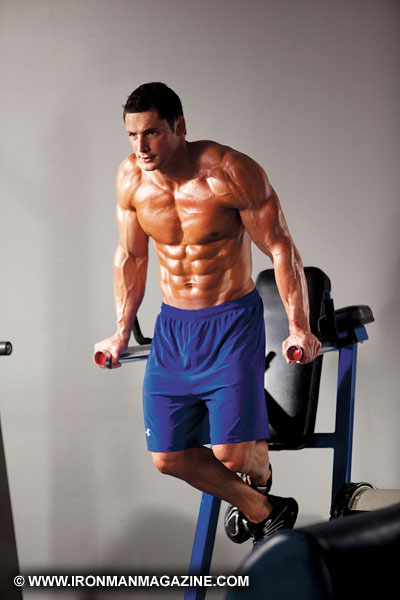
DY: What were the mental challenges you faced leading up to the competition, and how did you overcome them to achieve your condition?
SH: My main mental challenge came from switching from a mass-building diet to a strict precompetition diet over the course of a day. My body was used to the calorie surplus, and it’s tough to go right into depletion after that. Getting over those carb cravings can be a bit agitating.
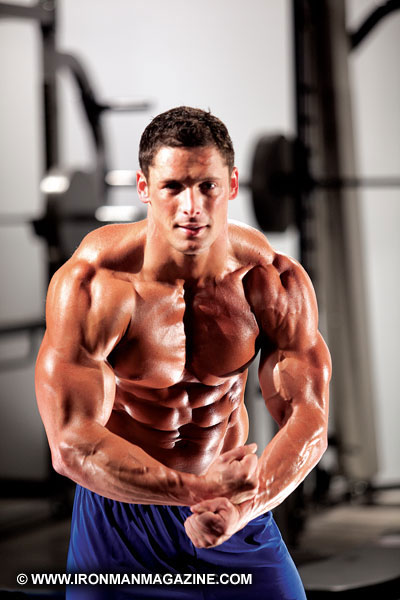
DY: So what’s next for your fitness career?
SH: There are many people trying to convince me otherwise, but right now I have no plans for stepping onstage for a bodybuilding show. I will be spokes-modeling for Bodybuilding.com and representing my company, www.ithinkfit.com, as well as Sensei Nutrition, throughout the year. I’m currently in talks with a few well-known photographers for some upcoming projects and doing a few guest spots for fitness topics on a couple of talk shows.
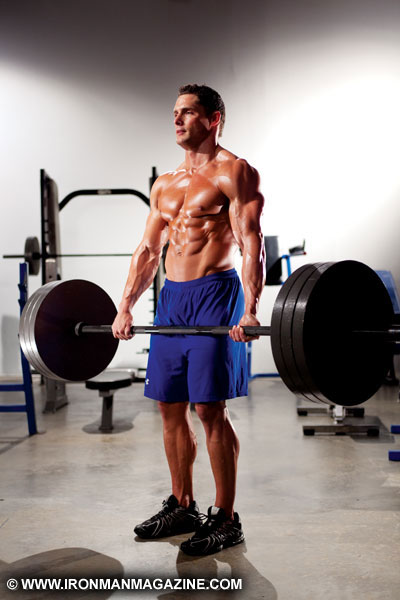
DY: How did you design the nutrition program that you followed for the competition?
SH: I used a diet that I learned from my old trainer, IFBB pro Derik Farnsworth, when I used to train at World Gym in San Diego. When you’re all natural, you need every advantage you can get from your diet, and Derik is a master at carb manipulation to change your body on demand.
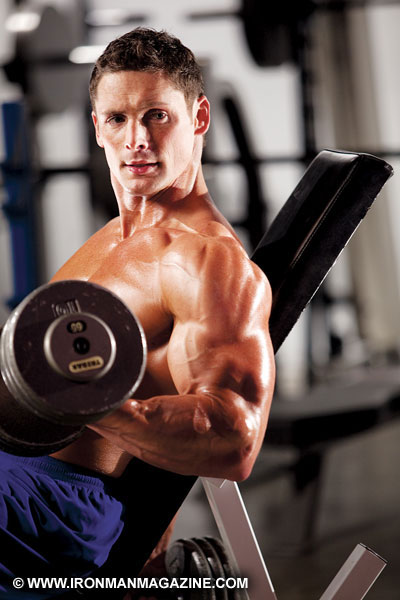
DY: I interviewed Derik a few years ago. I remember his carb-manipulation program. How did you apply it for the competition?
SH: I did a carb rotation that I typically don’t like doing for more than two weeks. Usually less, depending on how much I need to cut before a shoot date. It’s two days of no carb, with the exception of some green vegetables and pure fiber, followed by a third day of carb loading. On the carb day I cut off carbs at around 5 p.m. and end the day with a cardio session to burn out any remaining blood sugar that might be stored as fat overnight. That second day of no carbs can be agitating, but the results are always worth the sacrifice.
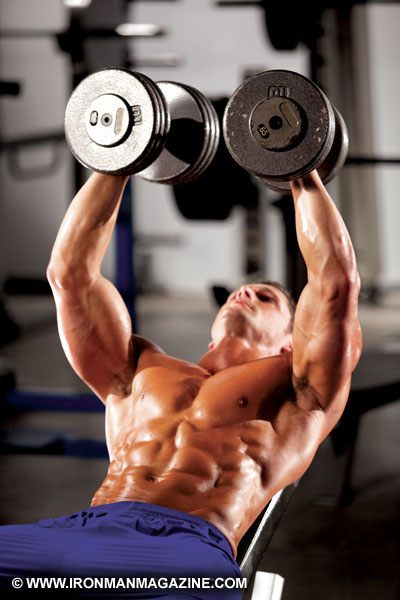
DY: Can you describe a sample day of eating, meal by meal?
SH: Sure.
Low-Carb Depletion Day:
7 a.m.: 2 scoops whey
10 a.m.: 6 egg whites with lean beef or chicken
12 noon: 8 ounces chicken breast, handful almonds
3 p.m.: (preworkout) 2 scoops whey
4:30 p.m.: 2 scoops whey
5 p.m.: 1 can low-oil tuna, lettuce
8 p.m.: 6 ounces lean steak, 6 stalks asparagus
10 p.m.: 5 hardboiled egg whites
Higher-Carb Day:
7 a.m.: 1 cup oatmeal with 2 scoops whey
10 a.m.: 2 whole eggs, 4 egg whites, 1 piece wheat toast
12 noon: 6 ounces chicken breast, 1 piece fruit
2 p.m.: (preworkout) 1 scoop whey, 1 medium sweet potato
4 p.m.: (postworkout) 2 scoops whey, 12 ounces Gatorade
6 p.m.: 1 can tuna, 2 stalks celery
9 p.m.: 6 ounces lean steak, lettuce, green beans or other green vegetable
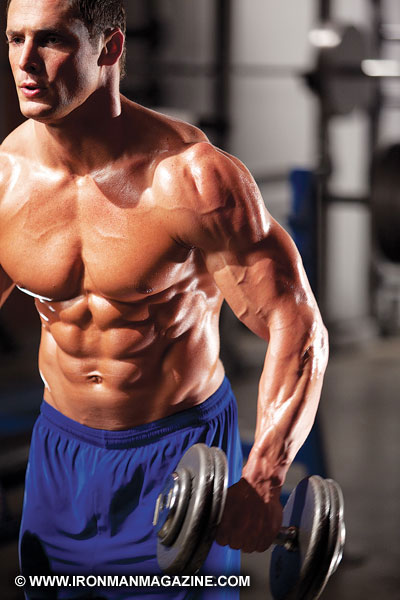
DY: Do you work with a training partner, and is he an important part of the preparation process?
SH: I train with my business partner Heath Murray, who usually joins me and takes the opportunity to lean out. It’s great having that support, since we have to spend a lot of hours around each other throughout the day. I usually pick up my cardio a little harder than he likes to, so much of that requires my own motivation. I’ll also join my personal-training clients in our “300”-style group workout (popularized from the workouts used by the actors in the movie “300”). It’s a lot more fun trying to burn 1,000 calories that way than it is jumping on a piece of cardio.
DY: How would you describe your training style, and has it changed much over the past few years?
SH: I’d describe my training style as strict and smart. I’m a stickler for form, and if I’m isolating a muscle, I want to make sure that it’s getting as little help from the others as possible. As for my basic weight-training split, it hasn’t changed a whole lot over the last couple of years other than adding the “300”-style training—we call it Leonidas—on top of what I was already doing. That’s made my core much stronger and has helped increase my overall strength as well. I’m stronger than I’ve ever been on my basic weight-training lifts.
DY: Which bodyparts respond easily, and which one or ones have been more challenging?
SH: I’d say that my delts are my strong point. They’ve always responded very well, and when I’m mass building, they seem to be the first part to grow. My frustrating muscle is my calves. They’ve always had a nice split and good vascularity, but I have the hardest time adding size to them.
DY: What are your favorite exercises?
SH: Anything on arm day! I love the feeling of a good arm pump and look forward to it all week. My favorite biceps exercise is a superset. I do one-arm reverse preacher curls, then stand up and grab a lighter dumbbell for a set of standing one-arm curls.
DY: Are there any exercises you’re unusually strong on?
SH: Since starting the Leonidas training, I’m finding all kinds of new strengths. I’ve recently found out that I can do a one-arm clean and press with a 135-pound barbell.
DY: What does your training week look like?
SH: Monday: Back and calves in the morning and Leonidas in the evening
Tuesday: Chest and HIIT cardio
Wednesday: Legs in the morning and Leonidas in the evening
Thursday: Shoulders, calves
Friday: Arms, HIIT cardio
Saturday and Sunday: Cardio if needed
DY: Describe a typical week of your training program, bodypart by bodypart.
SH: Sure.
Chest
Flat-bench presses 4 x 8-10
Incline dumbbell presses 3 x 10
Cable flyes
Low 2 x 10
Medium 2 x 10
High 2 x 10Back
Neutral-grip pullups 3 x failure
Half deadlifts 3 x 8
Pulldowns 3 x 10
Hammer-machine pulldowns 3 x 10
Dumbbell rows 3 x 10
Shoulders Dumbbell presses 4 x 10
Smith-machine upright rows (drop sets) 3 x 10(10)
Lateral raises 3 x 10
Rear-delt flyes 3 x 10Biceps
Incline dumbbell curls 3 x 10
EZ-curl-bar standing curls 3 x 8-10
Hammer curls 3 x 10
Superset
One-arm reverse preacher curls 3 x 10
One-arm curls 3 x 8-10Triceps
Rope pushdowns 4 x 10
Close-grip presses 3 x 8-10
Skull crushers 3 x 10
Cable overhead extensions 3 x 10
Weighted bench dips 3 x failureQuads
Squats 4 x 10-8
Leg presses or hack squats 4 x 10
Leg extensions 3 x 10Hamstrings
Standing cable leg curls 3 x 10
Seated leg curls 3 x 10
Stiff-legged deadlifts 3 x 10Calves
Standing calf raises 4 x 10-15
Seated calf raises 4 x 10-15
Rotary calf machine 3 x 8-12Abs
Crunches on foam roller 4 x failure
Roman-chair twists 3 x 20
Leg raises 3 x failure
DY: What’s your height, and what was your weight for this competition?
SH: I’m 5’10” and I was 190.
DY: Who inspired you in your fitness career?
SH: When I was starting, I was inspired by every fitness model I saw in the bodybuilding magazines. I thought, “I could do that,” and set out to do so. I worked briefly with Derik Farnsworth early on, and he was a great inspiration. I learned so much in a short time, and I still use a lot of it religiously to this day.
DY: Which nutritional products do you find useful?
SH: A good whey protein is the one product that I could not do without. Beta-alanine—Black Betas from Eight Ball Nutrition—works great in helping push the lactic acid out of muscles. When I’m cutting, I use ChiKara from Sensei Nutrition; I find the energy keeps me going on fewer calories, and the appetite control helps keep my diet in check. Depending on which phase of my training I’m in, there are a few other products I throw in as well.
DY: Do you have a favorite product, and, if so, why?
SH: My favorite is ChiKara. I use it every time I need to cut and feel it gets me there faster. I love the energy it gives me even when I’m doing low carb, and it controls my appetite and sugar cravings to help me stay honest.
DY: You get all of your products from Bodybuilding.com, correct?
SH: You bet.
DY: Let’s get a little history on you. What sports did you play growing up?
SH: I dabbled in a lot of sports. I played baseball until I realized that I suck at it and got tired of warming the bench. I loved basketball and would play in my driveway until all hours of the night until my mother dragged me inside. I tried wrestling my senior year of high school and loved it. I was best at football, which was my favorite, and went on to play all four years in college. I was recruited as a linebacker but was quickly moved to the other side of the ball as a running back. As I began to put on mass in college, they moved me to the fullback spot, which I loved playing.
DY: What kinds of mistakes did you make early on with your training and nutrition, and how did you change them to end up with the program you incorporate today?
SH: I used to think that a family-size can of baked beans was an excellent protein source and that mac and cheese was a “good carb.” I started lifting for football, and the motto was, “the heavier the better,” so I would really sacrifice form to move more weight. I started lifting right before I learned how to eat right. I learned a lot on how to better isolate the muscles and develop each muscle individually from reading workout magazines.
Now I use strict form in all lifts, and I don’t stack on more weight until I can reach my desired number of reps without cheating. I didn’t really start eating right until after college. I began working in the fitness industry and learned what and when I needed to eat to get my body to look the way I wanted. Every year I get to know my body a little better and how it responds to my diet and workout, so I’m still learning what works best for me.
DY: Who of the past and present exemplify your ideal type of physique?
SH: If we stick to bodybuilders, I think the ideal bodybulder physique from the past would be Bob Paris. He had amazing symmetry and the perfect X-frame. Today, I’m more appreciative of the Stan McQuay–type physique.
DY: What have been your biggest challenges in life and in your bodybuilding career? How did you overcome them?
SH: My biggest challenges in life have just been overcoming my fears about going out and getting what I want in life. If I had never conjured up the courage to get out of Nebraska and move to California, who knows what I’d be doing now? Staying self-employed has been challenging, but for me the payoffs keep me driving toward success internationally.
My biggest challenge in bodybuilding is keeping motivated—to keep taking that extra step that can keep me ahead of the competition. Even if it means eating another chicken breast while my friends are eating pizza and drinking beer.
Editor’s note: Visit Sean at www.IThinkFit.com. IM














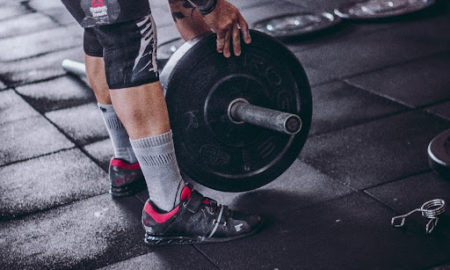
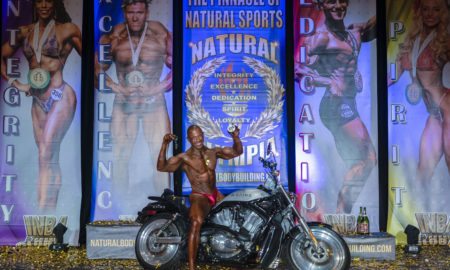
You must be logged in to post a comment Login